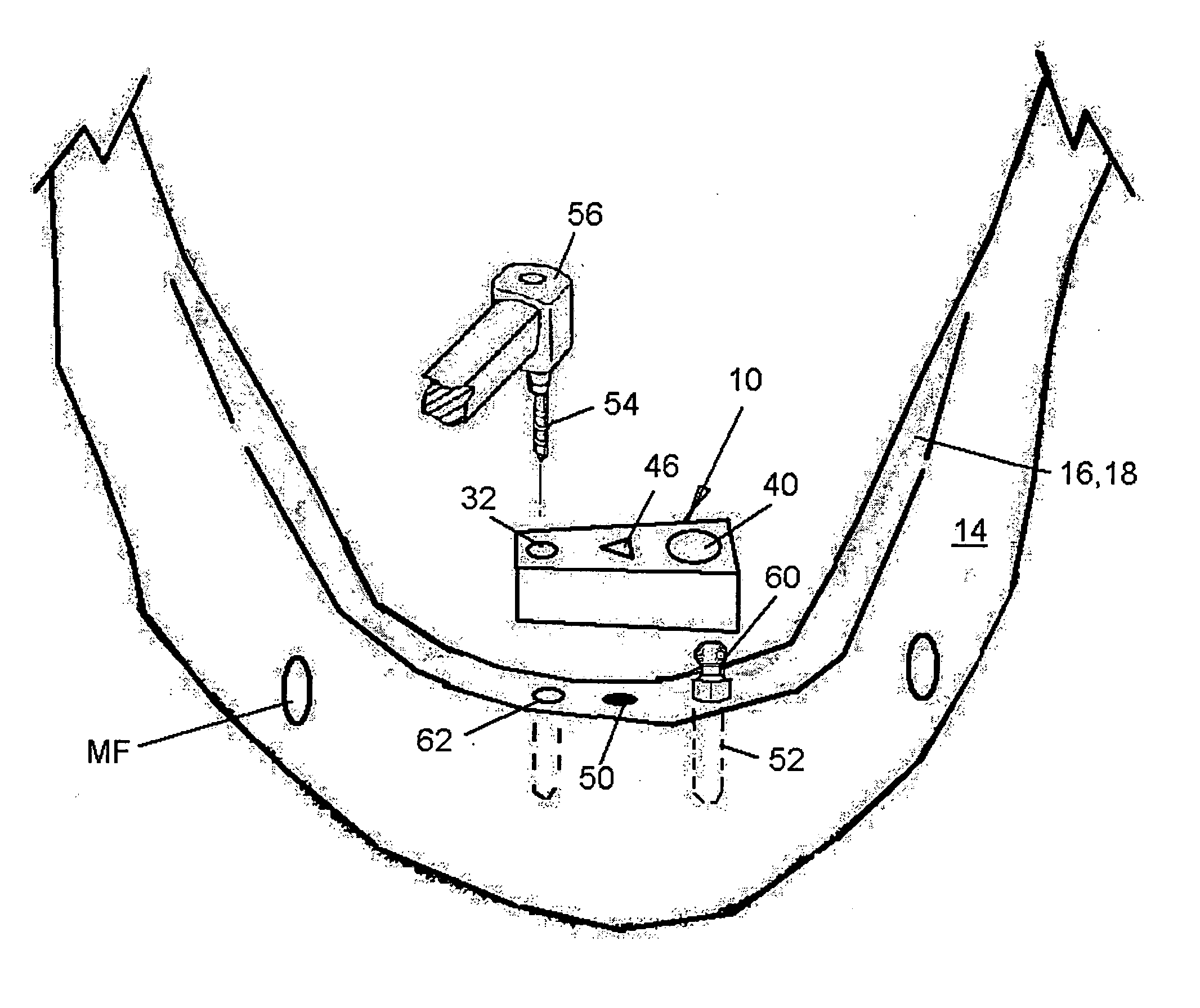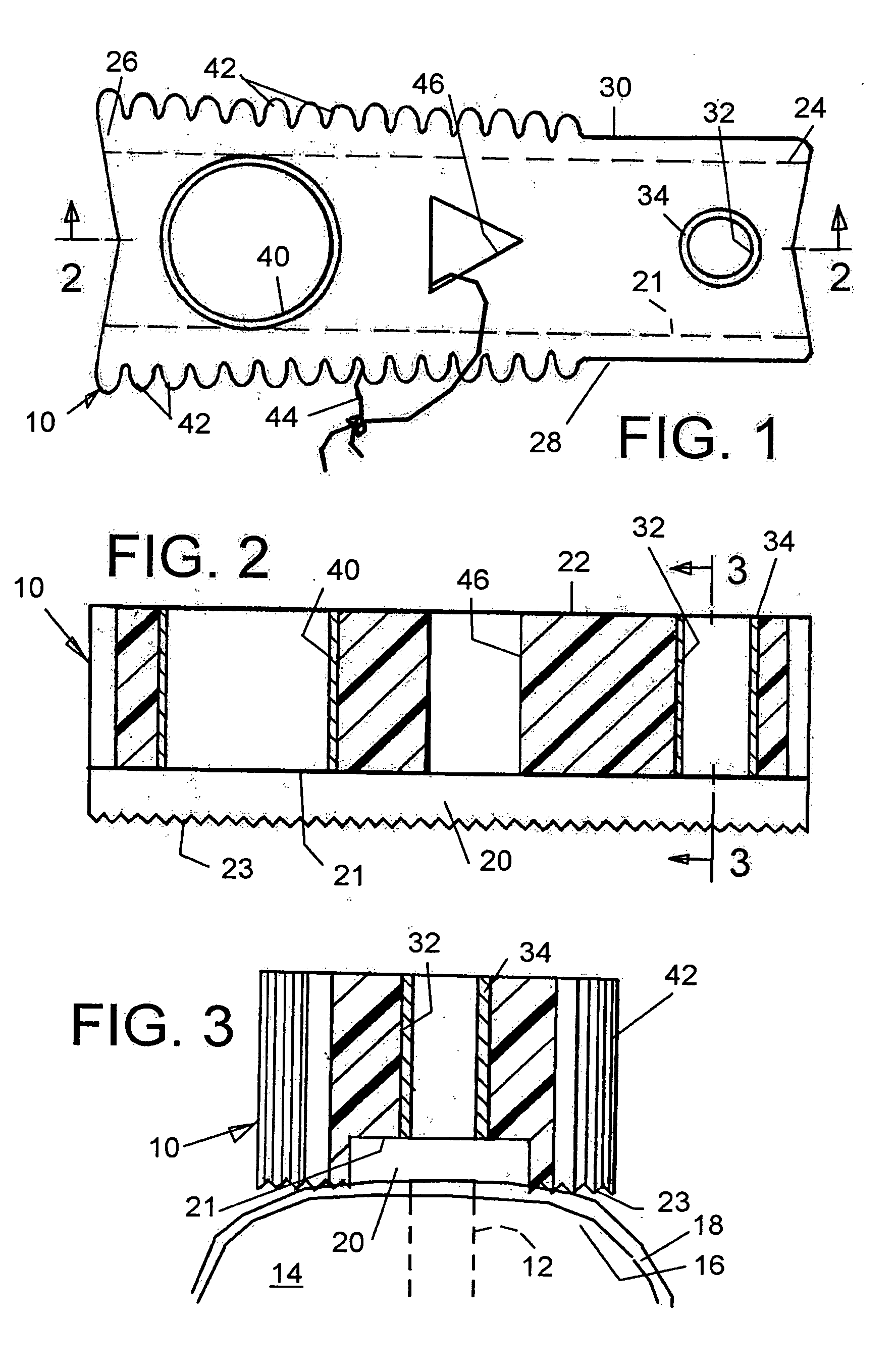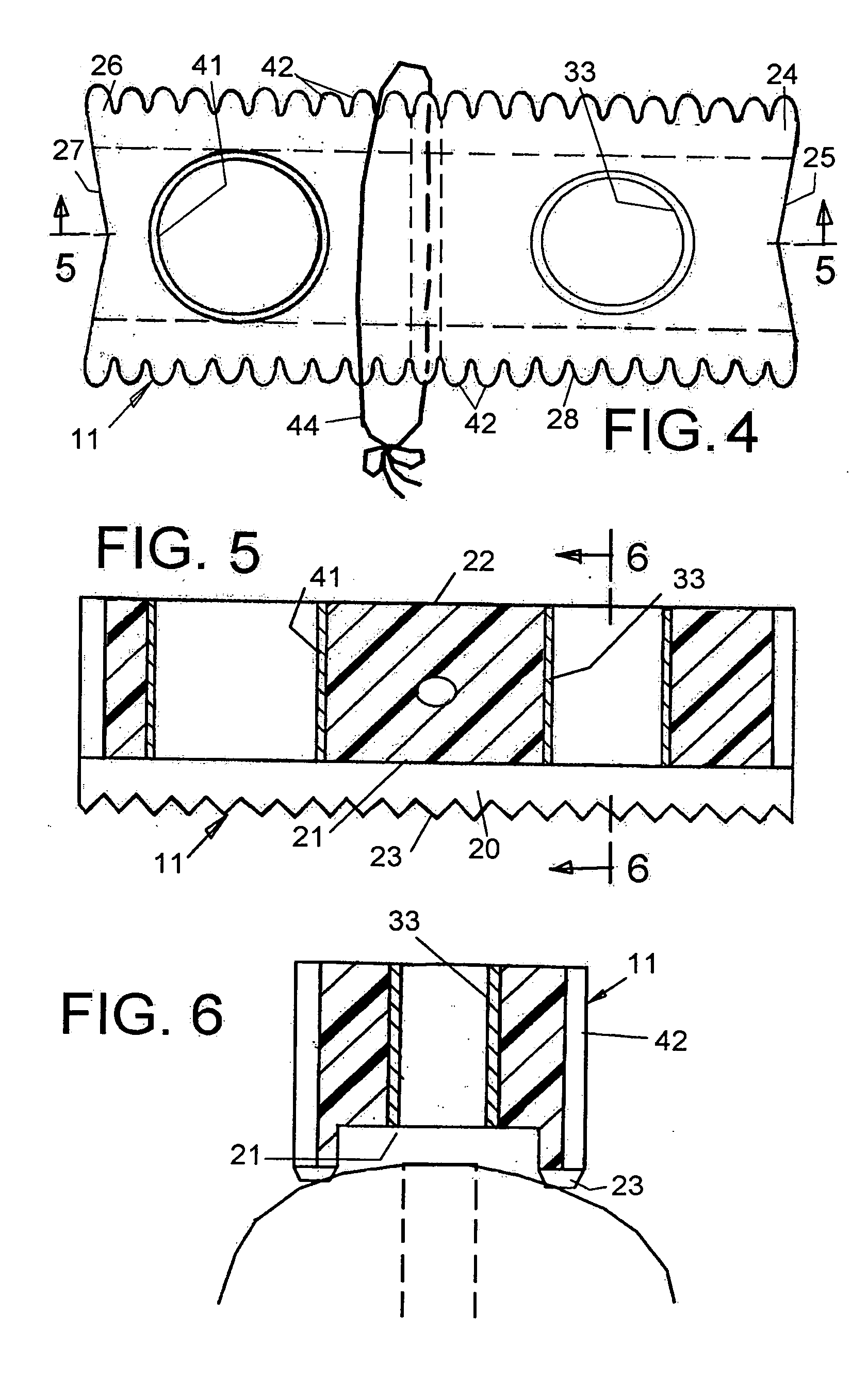Hole guide for mini and standard dental implants
a dental implant and guide technology, applied in the field of dental implants, can solve the problems of bone overheating, loss of implants, devitalization of adjacent teeth, etc., and achieve the effect of avoiding the serious danger of damaging structures
- Summary
- Abstract
- Description
- Claims
- Application Information
AI Technical Summary
Benefits of technology
Problems solved by technology
Method used
Image
Examples
Embodiment Construction
[0036] Referring now to the drawings in which like reference numerals are used to refer to the same or functionally similar elements, FIGS. 1, 2 and 3 illustrate an implant hole guide 10 for use in drilling a hole 12 in a jaw bone 14 in preparation for receiving a dental implant. The jaw bone has a ridge 16 for receiving an entry opening of the hole 12 to be drilled, and may be covered by gum tissue 18 for certain procedures for installing mini-implants, or may have the gum tissue temporarily moved aside for installing standard implants as will be explained later.
[0037] The guide member 10 has an inner surface 20 for engaging the ridge of the jaw bone when the guide member is engaged onto the jaw bone, and an opposite outer surface 22. The guide 10 also has a first end 24 and an opposite second end 26. The guide has a buccal surface 28 and an opposite lingual surface 30, however, these surfaces are interchangeable depending on the orientation of the guide when in use.
[0038] Guide ...
PUM
 Login to View More
Login to View More Abstract
Description
Claims
Application Information
 Login to View More
Login to View More - R&D
- Intellectual Property
- Life Sciences
- Materials
- Tech Scout
- Unparalleled Data Quality
- Higher Quality Content
- 60% Fewer Hallucinations
Browse by: Latest US Patents, China's latest patents, Technical Efficacy Thesaurus, Application Domain, Technology Topic, Popular Technical Reports.
© 2025 PatSnap. All rights reserved.Legal|Privacy policy|Modern Slavery Act Transparency Statement|Sitemap|About US| Contact US: help@patsnap.com



